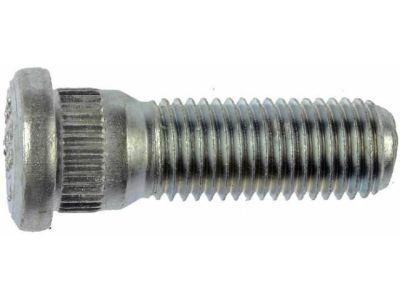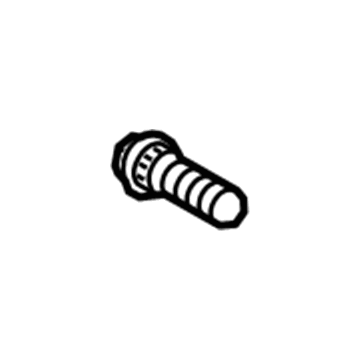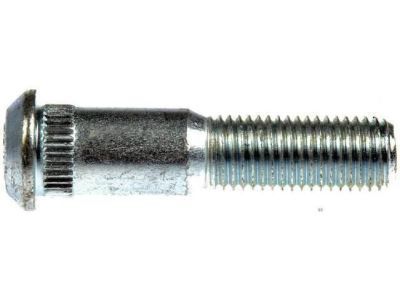×
ToyotaParts- Hello
- Login or Register
- Quick Links
- Live Chat
- Track Order
- Parts Availability
- RMA
- Help Center
- Contact Us
- Shop for
- Toyota Parts
- Scion Parts
My Garage
My Account
Cart
OEM 2003 Toyota Matrix Wheel Stud
Rim Wheel Stud- Select Vehicle by Model
- Select Vehicle by VIN
Select Vehicle by Model
orMake
Model
Year
Select Vehicle by VIN
For the most accurate results, select vehicle by your VIN (Vehicle Identification Number).
2 Wheel Studs found

2003 Toyota Matrix Wheel Stud
Part Number: 90942-02082$4.17 MSRP: $5.81You Save: $1.64 (29%)Ships in 1-3 Business DaysProduct Specifications- Other Name: Bolt, Hub; Wheel Lug Stud, Front, Rear; Wheel Hub Repair Kit; Wheel Hub Bolt; Wheel Bolt; Hub Assembly Wheel Stud; Standard Parts; Wheel Lug Stud for all axle positions.
- Replaces: 90942-02049, 90942-02017, 90942-02037, 90942-02070
- Item Weight: 0.50 Pounds
- Condition: New
- Fitment Type: Direct Replacement
- Require Quantity: 5
- SKU: 90942-02082
- Warranty: This genuine part is guaranteed by Toyota's factory warranty.

2003 Toyota Matrix Hub & Bearing Bolt, Rear
Part Number: 90942-02078$7.76 MSRP: $10.79You Save: $3.03 (29%)Ships in 1-3 Business DaysProduct Specifications- Other Name: Bolt, Hub; Wheel Lug Stud, Rear; Wheel Hub Repair Kit; Wheel Hub Bolt; Wheel Bolt; Wheel Stud; Bolt, Hub(For Rear Axle Passenger Side); Bolt, Hub(For Rear Axle Driver Side); Wheel Lug Stud
- Position: Rear
- Item Weight: 1.80 Pounds
- Item Dimensions: 3.7 x 2.6 x 2.2 inches
- Condition: New
- Fitment Type: Direct Replacement
- Require Quantity: 5
- SKU: 90942-02078
- Warranty: This genuine part is guaranteed by Toyota's factory warranty.
2003 Toyota Matrix Wheel Stud
Looking for affordable OEM 2003 Toyota Matrix Wheel Stud? Explore our comprehensive catalogue of genuine 2003 Toyota Matrix Wheel Stud. All our parts are covered by the manufacturer's warranty. Plus, our straightforward return policy and speedy delivery service ensure an unparalleled shopping experience. We look forward to your visit!
2003 Toyota Matrix Wheel Stud Parts Q&A
- Q: How to replace a Wheel Stud on the rear axle LH hub on 2003 Toyota Matrix?A: A proper replacement of the rear axle LH wheel stud begins with wheel removal and afterward separating the rear disc brake caliper assembly LH (disc rear brake type) before disc removal. 4WD drive type owners must separate the rear stabilizer link assembly LH before they remove the rear axle shaft LH nut with Special Service Tool: 09930-00010 and then detach the rear brake drum sub-assembly (drum rear brake type). The next step requires you to separate the speed sensor rear LH and remove the parking brake shoe strut set LH and the front brake shoe before continuing with the removal of the rear brake automatic adjust lever LH and rear brake shoe with Special Service Tool: 09718-00010. After using Special Service Tool: 09023-00100 to split the parking brake cable assembly No. 3 from the rear brake tube No. 4 continue by separating the rear suspension arm assembly No. 1 LH from the upper control arm assembly. Move away the axle assembly RR LH as well as the rear wheel bearing dust deflector No. 1 LH and rear axle hub & bearing assembly LH. Operators of 2WD vehicles must use Special Service Tool: 09628-10011 together with a hammer handle or equivalent while removing the LH wheel stud but 4WD operators must utilize a press for removal of this component. When installing the LH wheel stud for 2WD vehicles you must mount a washer and nut to a new stud then use a hammer handle to hold the hub assembly before tightening the nut. Installation of new LH wheel studs for 4WD should be performed using a press together with extension bars. Specially adjust Special Service Tools 09608-10010, 09950-60020 (09951-00680), 09950-70010 (09951-07100) to install the rear axle hub and bearing assembly LH along with rear wheel bearing dust deflector No. 1 LH before tightening the upper control arm assembly temporarily. The installation of the rear axle assembly RR LH demands temporary mounting of rear suspension arm assembly No. 1 LH along with rear brake tube No. 4 installation using Special Service Tool: 09023-00100. Install the rear brake shoe along with rear brake automatic adjust lever LH using Special Service Tool: 09718-00010 by beginning with the parking brake cable assembly No. 3 and high-temperature grease application before proceeding with the front brake shoe and parking brake shoe strut set LH. The technician should check and install the rear brake drum sub-assembly (drum rear brake type) together with the rear axle shaft LH nut. The brake shoe clearance of the rear drum assembly requires adjustment after reinstalling the rear brake drum sub-assembly for vehicles with 4WD. Lubricate the brake cables with high-temperature grease before readjusting the parking brake mechanism. Reinstall the rear brake shoe with automatic adjust lever LH using service tool 09718-00010 followed by the front and rear shoes along with the parking brake strut set LH. Inspect newly installed drum assembly installation. To finish the procedure you must attach the rear disc with its caliper LH while bleeding lines and putting on stabilizer links LH. To complete the installation, install the rear wheel keeping the torque at 103 Nm (1,050 kgf-cm, 76 ft. lbs.) then stabilize the suspension and fully tighten the upper control arm assembly and rear suspension arm assembly No. 1 LH while checking the fluid level in the reservoir and conducting an inspection and adjustment of rear wheel alignment followed by checking the ABS speed sensor signal.















